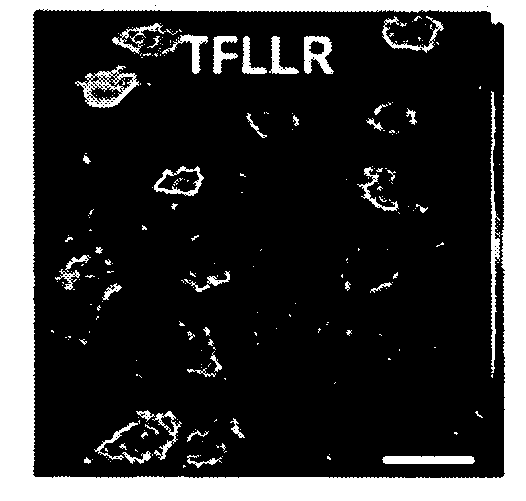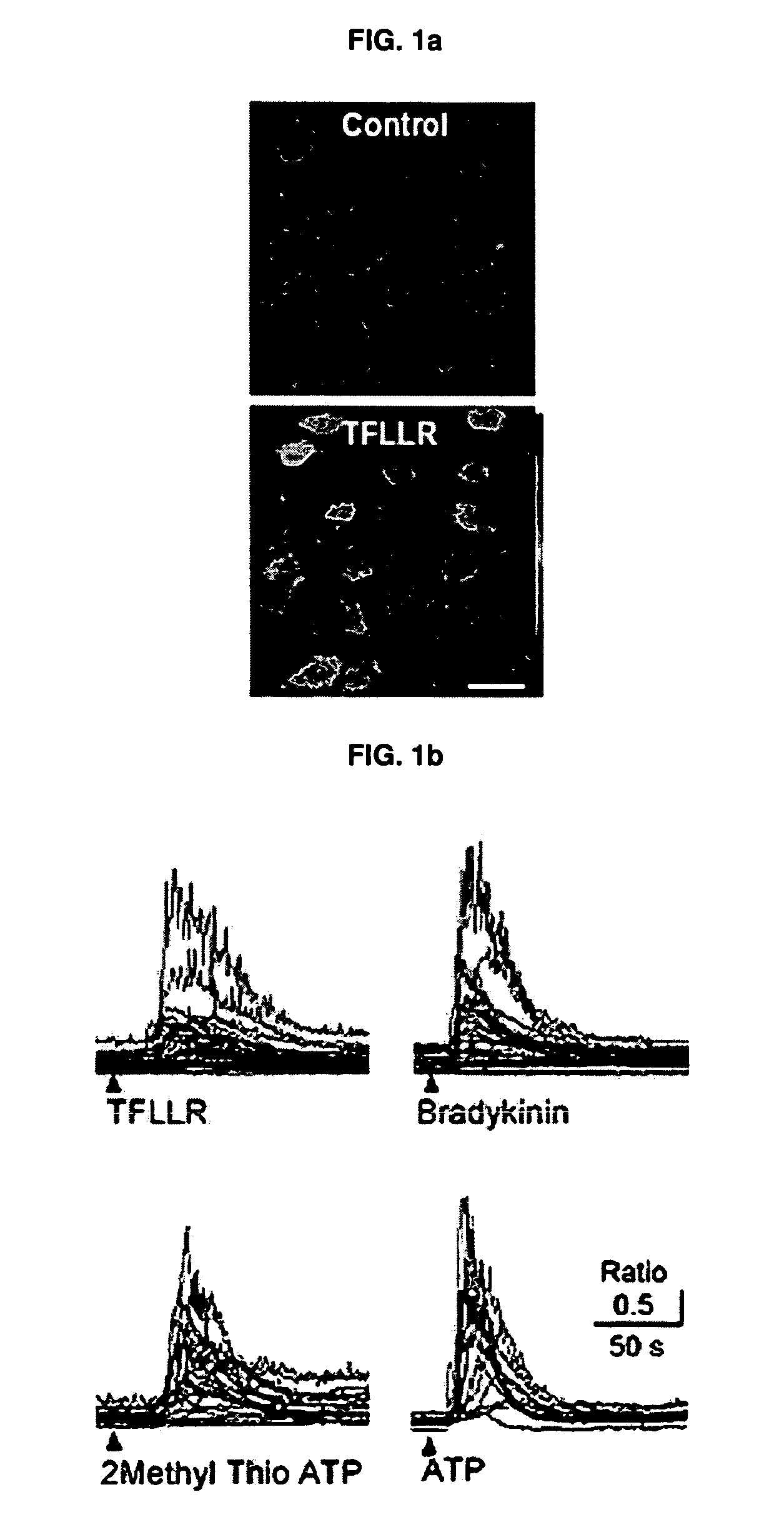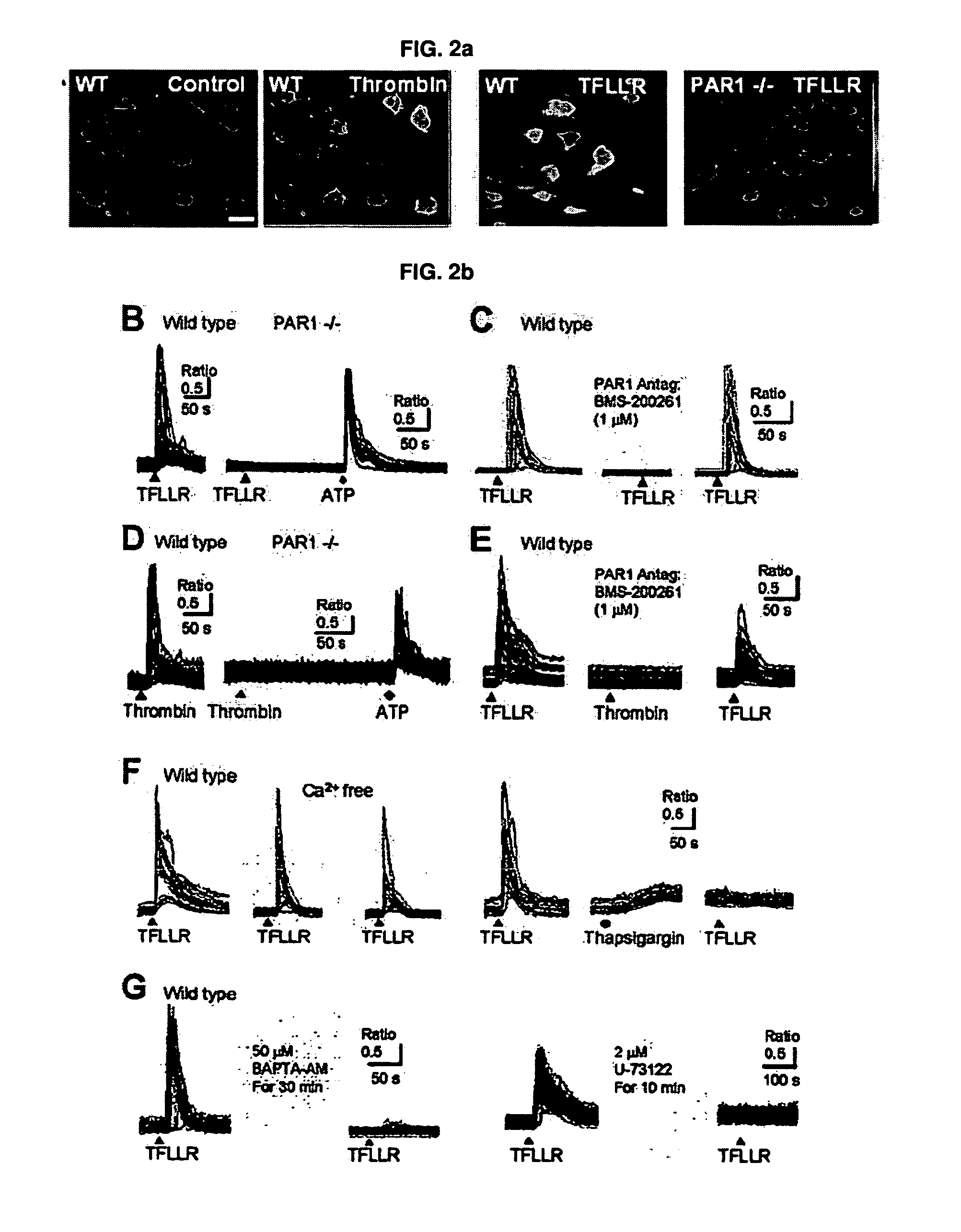Mechanism of astricyte-neuron signaling
a technology of astricyte and neuron, applied in the field of new communication mechanisms, can solve the problem of almost no studies on the active function of astrocytes
- Summary
- Abstract
- Description
- Claims
- Application Information
AI Technical Summary
Benefits of technology
Problems solved by technology
Method used
Image
Examples
example 1
[0107]1.1: Preparation of Wild-Type and PAR1− / − Astrocytes
[0108]Cultured astrocytes were prepared from P0-P3 postnatal mice obtained from KIST SPF. The cerebral cortex was dissected free of adherent meninges, minced, and dissociated into single cell suspension by trituration through a Pasteur pipette. All procedures involving the use of animals were reviewed and approved by the Emory University IACUC. Dissociated cells were plated onto either 12 mm glass coverslips or 6 well plates coated with 0.1 mg / ml poly-D-lysine. Cells were grown in a DMEM media (Gibco, cat# 11960-044) supplemented with 25 mM glucose, 10% heat-inactivated horse serum, and 10% heat-inactivated fetal bovine serum, 2 mM glutamine, and 1000 units / ml penicillin-streptomycin. Cultures were maintained at 37° C. in a humidified 5% CO2-containing atmosphere. Astrocyte cultures prepared in this way were previously determined by GFAP (glial fibrillary acidic protein) staining to be greater than 95% astrocyte...
example 2
Acute Dissociation of CA1 GFAP-GFP Astrocytes from Hippocampal Slices
[0115]The CA1 region was micro-dissected from hippocampal slices (300 μm thick, see below) and exposed for 30 min at 37° C. to 1 mg / ml trypsin (type III; Sigma, St. Louis, Mo.) dissolved in divalent free HEPES buffered saline. Trypsin was subsequently inactivated by adding an external solution containing CaCl2 (2 mM) and MgCl2 (2 mM). The hippocampal sections were mechanically dissociated with fire-polished glass pipettes. Cells were washed twice and plated on poly-D-lysine (10 ug / ml) coated glass coverslips, and placed in an incubator at 37° C. for 30 to 60 min before use.
example 3
Perforated Patch
[0116]Whole-cell perforated-patch recording from cultured cortical neurons or HEK cells under voltage clamp (holding potential −60 mV) was made with an Axopatch 200B amplifier (Axon Instruments, Union City, Calif.). The recording chamber was continually perfused with a recording solution comprised of 150 mM NaCl, 3 mM KCl, 2 mM CaCl2, 5.5 mM glucose, and 10 mM HEPES (pH 7.4 by NaOH; osmolality adjusted to 315-320 mOsm with sucrose). Recording electrodes (4-7 MΩ) were filled with (in mM) 150 mM CsMeSO4, 10 mM NaCl, 0.5 CaCl2, 10 mM HEPES, and 25-50 μg / ml gramicidin D (pH adjusted to 7.3 with CsOH and osmolality adjusted to 310 mOsm with sucrose). It took 20-30 min to achieve acceptable perforation with series resistance ranging from 30-60 MΩ. All electrophysiological data from cultured neurons cells in this study were collected at room temperature (23-26° C.).
PUM
 Login to View More
Login to View More Abstract
Description
Claims
Application Information
 Login to View More
Login to View More - R&D
- Intellectual Property
- Life Sciences
- Materials
- Tech Scout
- Unparalleled Data Quality
- Higher Quality Content
- 60% Fewer Hallucinations
Browse by: Latest US Patents, China's latest patents, Technical Efficacy Thesaurus, Application Domain, Technology Topic, Popular Technical Reports.
© 2025 PatSnap. All rights reserved.Legal|Privacy policy|Modern Slavery Act Transparency Statement|Sitemap|About US| Contact US: help@patsnap.com



